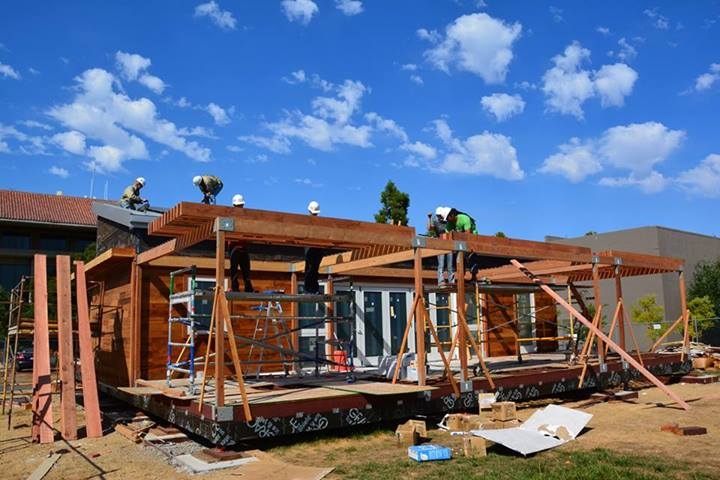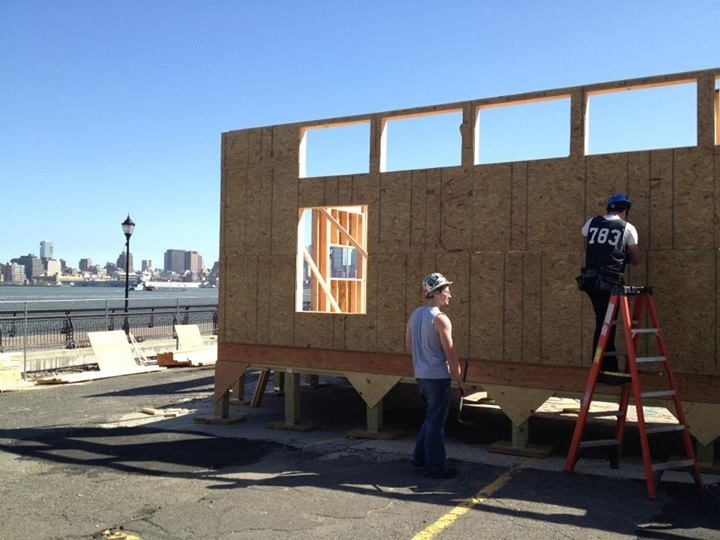Solar Decathlon 2013: Building Skills for Future Careers
Monday, September 16, 2013By Rebecca Matulka
Editor’s Note: This entry has been cross-posted from DOE’s Energy Blog.
After nearly 18 months of hard work perfecting their designs, U.S. Department of Energy Solar Decathlon teams stepped outside the classroom and began building their competition houses this spring. For many teams, the building process means more than just seeing their designs come to life. It is also a chance to gain hands-on experience that is beneficial to their future careers.
Although the building process is different for every team, one theme is consistent: for most students, this is their first construction experience. Along the way, students learn how to read blueprints, work with contractors, stay on deadline, and even operate power tools. They also become experts in problem-solving by figuring out ways to resolve design conflicts on the construction site. This includes testing their energy systems to make sure their houses produce as much energy as they use—a key part of the competition. In the final weeks of the building process, the teams work out all the kinks with the houses before preparing them for travel to the competition site in California.
Stanford Learns From Mistakes and Comes Out Stronger

It took six months and nearly 60 students to build Stanford’s Start.Home, a house that aims to lower the entry barrier for an ultra-efficient house and make sustainability trendy. (Courtesy of Stanford University)
It took six months and nearly 60 students to build Stanford’s Start.Home, a house that aims to lower the entry barrier for ultra-efficient housing and make sustainability trendy. During construction, the team learned that some of its key design elements, such as Start.Home’s ability to split into five modules to allow the house to grow with its occupants, were some of the most difficult to build. To solve this problem, the team had to pay careful attention to the connection points between each module to ensure that wires, ducts, and pipes could be disconnected and reconnected. With each construction challenge, the team took it in stride and made it a learning experience. In the end, the team says that the building process provided the practical knowledge and training necessary to be great engineers and designers.
Stevens Institute of Technology: A View To Build For

With a spectacular view of the New York City skyline, students from the Stevens Institute of Technology spent more than three months on the Hoboken Waterfront building their house, Ecohabit, and they considered it a learning process for everyone. (Courtesy of Stevens Institute of Technology)
With a spectacular view of the New York City skyline, students from the Stevens Institute of Technology spent more than three months on the Hoboken Waterfront building their house, Ecohabit, and they considered it a learning process for everyone. For many it was their first construction experience, and for others it was an opportunity to teach construction and gain hands-on experience installing Ecohabit’s innovations—such as the smart energy management system that monitors weather patterns, occupants’ habits, and energy use to provide feedback on ways to live more efficiently. Although the team’s biggest challenge was the learning curve associated with the building process, it also points to that as the best part of the process. Students got to see first-hand every day how the design decisions they made in the beginning of the competition affected the house’s construction. Through the building process, students gained experience building their design on a real scale—something that they wouldn’t have the opportunity to do outside of the competition.
Rebecca Matulka is a digital communications specialist in the Department of Energy’s Office of Public Affairs.
Tags: Solar Decathlon, Solar Decathlon 2013, Stanford, Stevens, Teams
